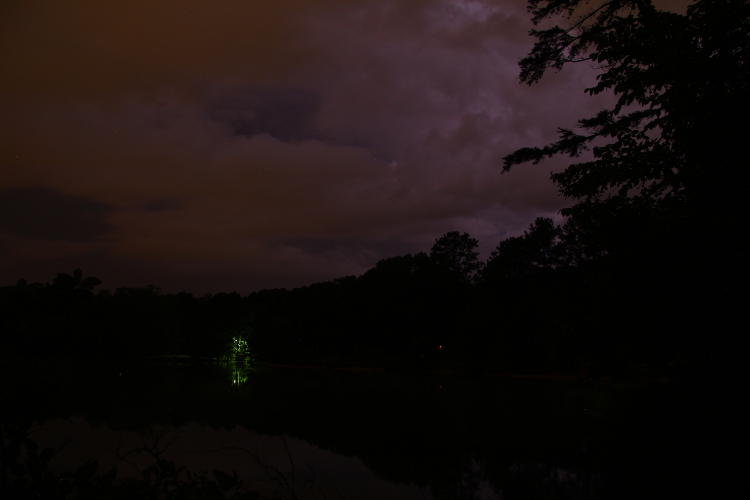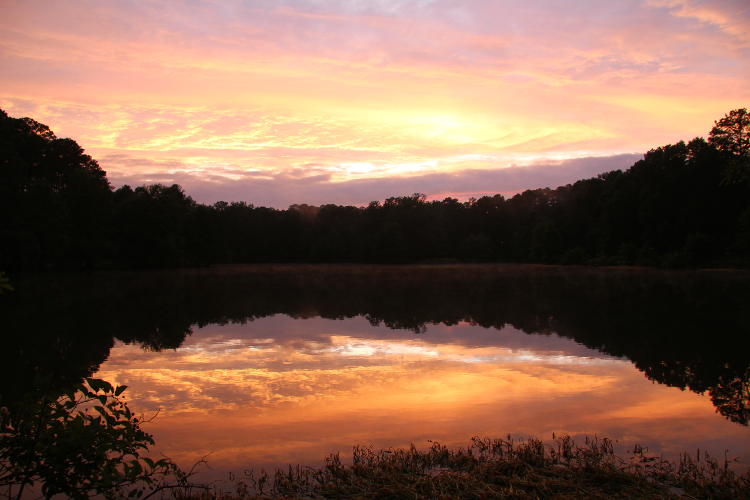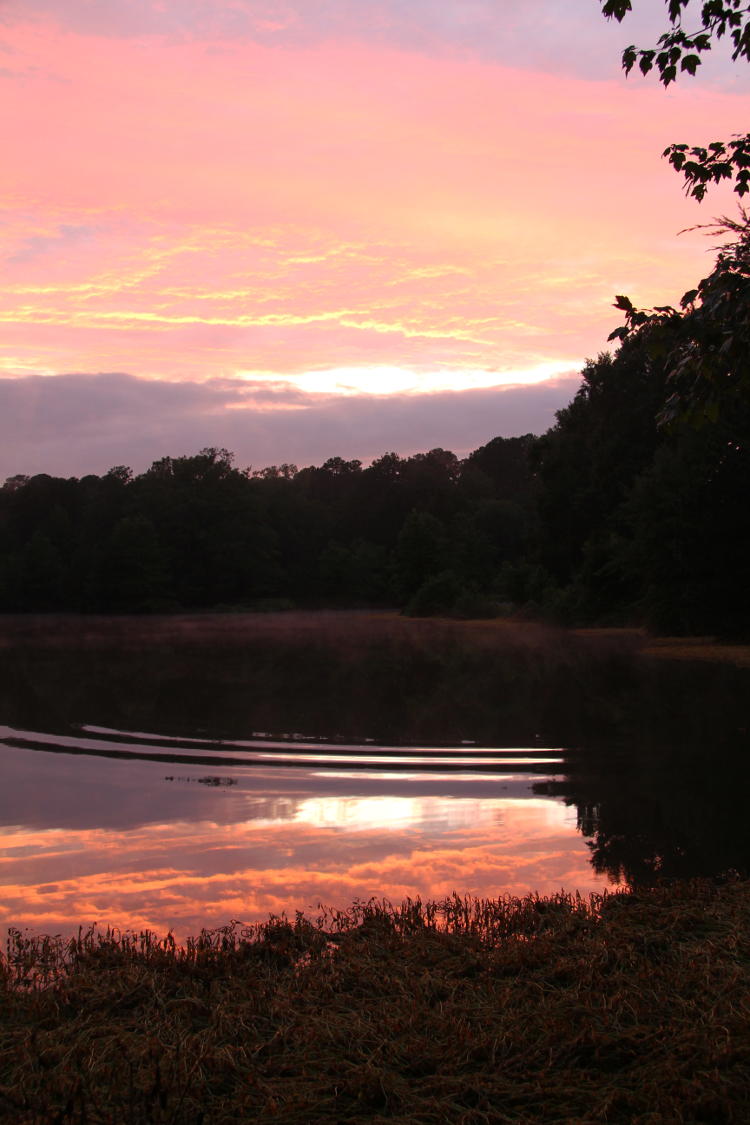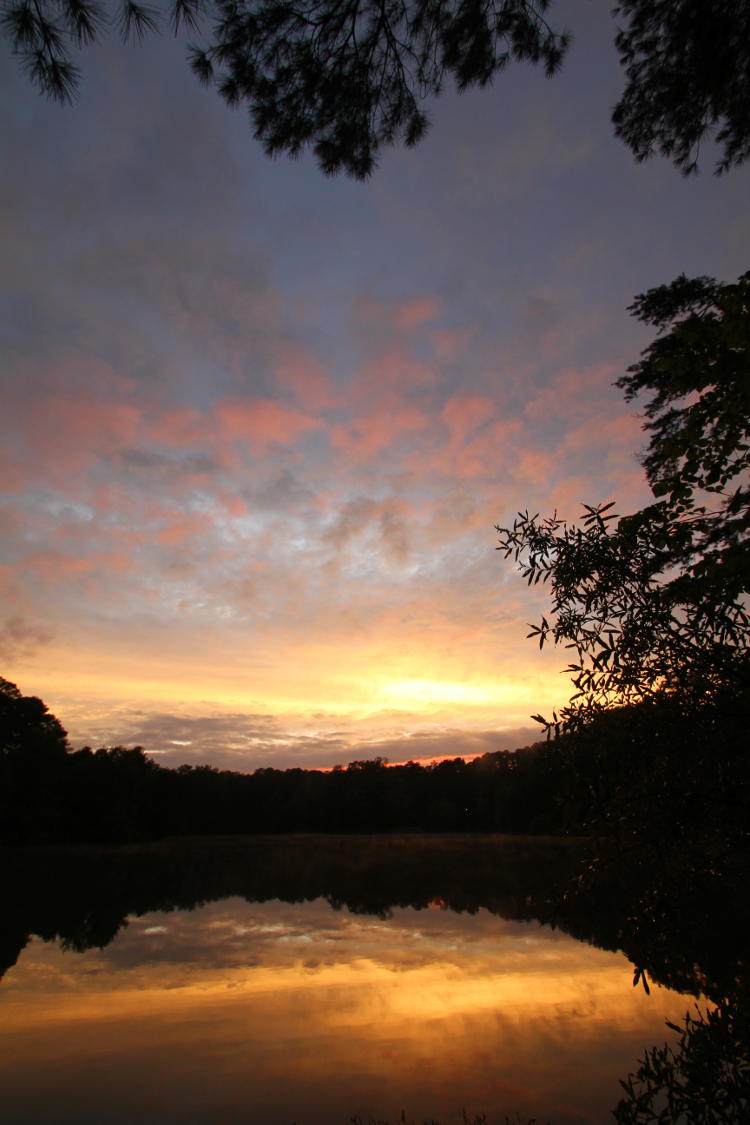[Just a brief opening note here. I originally started this topic quite some time ago and had it sitting in the folders in draft form while I tackled other subjects. In the meantime, the whole ‘Area 51’ hoohah started, and so I decided to finish it off and post it to take advantage of the huge boost it will provide to the website visits. Or something…]
Many years back I started the “But how?” series of posts to demonstrate how a secular approach could not only explain all of the aspects of a religious worldview, it usually did a much better job. Eventually, I found that the format of that initial question didn’t always work for some of the topics, but I plowed ahead anyway. The same might happen here, as I start a new topic format that already has three topics in the lineup. We’ll just have to see how it goes.
The premise is simple. Very often in certain circles, a question arises something along the lines of, “Why doesn’t science take this seriously?” And it’s often not even a question, but a left-handed (or direct) accusation that scientists are in some form of cabal that intentionally dismisses or ignores some particular theory/hypothesis/speculation/wild-ass idea. My goal here is to show that there are usually very distinct reasons why such ideas don’t deserve much, if any, attention, and it has nothing whatsoever to do with ulterior motives – it’s just science itself.
That said, let’s look at the idea of alien visitation, UFOs and abductions and all of the related subtopics. Why don’t scientists pay more attention to these accounts?
The physics. There are two distinct aspects of this, closely intertwined.
We already know what our solar system is like, and that there is no evidence whatsoever of any kind of advanced life anywhere to be seen. And in fact, even rudimentary life is likely not present, though we’re still looking for evidence in a few interesting locales, like under the ice crusts of Enceladus and Europa, as well as seeking evidence of past life on Mars. But intelligent species capable of space travel? There isn’t the faintest evidence of such – not on any surfaces, not in radar traces, not in energy emissions, nothing that we would expect to find. And given what we know about life itself, the exchange of energy needed between cells and the supporting ecosystems, there isn’t any place that’s actually hospitable. While it’s easy to speculate that there could be some society, like, buried well beneath a surface, does this even make any sense? It’d be much harder to live there (having no solar radiation to begin with) and even the radar mapping of terrain hasn’t turned up any evidence of cavern systems.
Once we go outside of our solar system, the distance to even the nearest neighbor is, to put it technically, fucking huge – light takes over four years to make the journey, and we all know how fast that travels. So, the likelihood of any intelligent species making the jaunt is extremely low, and even less so when we think they might be doing so in small undetectable craft.
The very next arguments that come up are how, for instance, an advanced species could have overcome physical constraints to travel faster than light, or use energy really efficiently, and so on. Yet the amount that we know about physics right now is far from insignificant, and we’ve been doing experiments in these fields for well over a hundred years, as well as observing the stellar neighbors for a hell of a long ways out. There are some very basic laws, ones we have defined very specifically – it’s all, in fact, boiling down to just four physical forces, and they’re enough to explain damn near everything that we see, from star formation and the fusion of new elements down to the interactions of electrons around a nucleus. Those big particle colliders are part of how we know all of this, and our attempts to produce anything different. Very very long story short: those four physical forces are holding firm. Don’t trust me on this – feel free to look into it yourself. It’s not a field that’s ignored or unexplored in any way.
Next invariably come the protests of something outside of physics – extra-dimensional travel, or hyperspace, or wormholes, and so on. And true enough, these had their origins in speculative physics, and the nature of space-time itself. But they’re not only speculative, we’ve found no evidence of such things occurring at all, despite our careful examinations of the universe. But much worse, if you depart space-time and those four physical laws, you also depart the very rules that keep us as atoms and molecules and, you know, whole bodies. All such scientific speculation revolves around subatomic particles and things like vacuum energy – not anything ‘solid.’ And I’ll be blunt – there is no scientific speculation about such wormholes or whatever that also allow the basic four forces to selectively exist so that a craft of any kind could remain intact. That’s science fiction – authors like finding creative ways to have alien contact beyond radio messages, but science isn’t supporting it at all.
The expectations. There are a few small groups of scientists, astrophysicists and radio astronomers and so on, that actually are looking for any evidence of extra-terrestrial life. But they’re looking for the most efficient manners that we might find such. Physical visitation is not efficient – far from it. It takes a lot of energy to make such a trip, all the life support and all the fuel and so on, while it would be thousands of times easier just to send a message, should any species be so inclined (and who can say if they would be? We can’t use our own social curiosity as an example, because it’s far from given that this is a necessary aspect of intelligence.) But even without such overt messages, there’s still just the idea that any species would leave some kind of externally observable traces – stray radio emissions just from surface communication, or heat signatures from industrialization, and so on. And as yet, we’ve seen no sign. So why would we come up short on that, and somehow have spacecraft flying around in our atmosphere?
Moreover, it’s dangerous. The moment that you initiate close contact with another species, you’re within easy range of their reactions, whatever they might be – and the possibility that they’d be hostile is distinct enough. Plus the very idea of putting life forms out into this environment is risky all by itself, and for what purpose? Is there some kind of information that has to be garnered personally that could not be done remotely? Think about this: if we encounter another species ourselves, are we going to go straight for anatomical exams, or try to determine just how intelligent they are first? Is it better to set up communication, perhaps, before we go zooming around in the sky over their populated regions? Even if we’re confident that their defensive measures could not affect us, how irresponsible would it be to flout those, and to what useful end?
[By the way, the myriad accounts of aliens that somehow know our language are a bit suspect in and of themselves; how do you learn an entirely alien language? Hell, it’d be ridiculously difficult to even take our TV transmissions and determine that they’re intended for a visual image that’s coded for an electron gun aimed at phosphors on a glass plate…]
The evidence. Science needs evidence. It isn’t about making pronouncements, saying something like, “Yep, there must be aliens.” We need things to measure, and analyze, and compare – something more than stories. But unfortunately, that’s just about all that we have. For the thousands of accounts, ranging from distant observations to actual physical contact, the amount of testable artifacts or traces is damn near zilch; the amount that could not easily be explained is even lower than that. For instance, there isn’t any kind or shape of scar that could not be produced in an ordinary manner. Which will introduce a criterion often used in such investigations, outlined further down.
Sure, we have lots of photos, and even a few videos. Except, photos are remarkably easy to fake, and can only provide so much information no matter what – it’s simply the nature of lenses and recording media. Claims that someone “wouldn’t know how to fake a photo” are ludicrous, considering that it’s been done since the dawn of photography, and doesn’t need anything more than a basic understanding of lens properties anyway. An aperture of f22 gives a high depth of field? There you go – there’s no way to determine if this object is ten or five hundred meters away. Moreover, when it comes down to it, a photo isn’t very much information at all – it consists of contrasts within a chosen medium, and not only can this be produced in countless ways, in and of itself it shows nothing; such images need to be interpreted, and all too often they’re interpreted incorrectly, even with known subjects. What we have an impression of is not necessarily what we’re actually seeing, and is biased by what we want to see. As ‘proof’ of an extra-terrestrial airborne craft, well, no – especially when we have no physical examples of such craft to compare the images to in the first place.
Eyewitness accounts are so pathetically weak it’s laughable, and in fact, they’re the weak point of any court case. Even if we assume, rather rashly, that someone must be telling the truth, they’re only telling what they think they saw, not necessarily what they did. There are very real limits to human perception, and beyond certain points (like less than twenty meters,) there is no active depth perception, and no method to accurately judge size. Even in everyday occurrences, people can be remarkably bad at getting the details right, and in circumstances where they’re not even sure of what they’re seeing, the chance of their account being accurate drops to disturbingly low numbers. And while we’re on the subject, pilots do not receive any training at all regarding observation of objects in the air, except to actually watch for them. But even if they did receive specific training, it still wouldn’t overcome the limits of perception, especially without distinct measurements of angle and position. Air traffic control exists for a reason, as does radar.
Yes, there are lots of accounts, which many people take to mean there must be something to them. But a few hundred years ago, there were lots of accounts of demonic visitation and possession, as well as various odd critters. Two principle things come into play here: suggestibility and notoriety. Anyone that says they spotted a coyote in their neighborhood will spawn numerous follow-up sightings from others, most of whom couldn’t distinguish a coyote from a fox or stray dog. Once introduced into the mind, it is often the first thing that springs up as an explanation in any circumstance that seems to warrant it, especially so among people who favor the idea. And then there’s notoriety, because there still exists media solely concerned with making a buck, imagine that, that will gladly hype any story no matter how insubstantial – and once it’s been featured, there’s that suggestibility again. When Project Blue Book announced that it was receiving UFO reports from the general public, the number of those reports exploded; are we to assume that at that very moment the visiting aliens drastically increased their numbers? Or that there were thousands of people beforehand who simply never reported what they’d been seeing? Or could it simply have been a bandwagon effect? Considering how few remained unidentified following the investigations, it doesn’t bode well for such accounts being accurate or useful.
Much worse are the large number of singular accounts with no corroboration, which are virtually worthless. How inaccurate are they? There’s no way to determine. Are they outright lies? Again, who knows? Can we follow up in some way? No, it happened three days ago – the UFO is probably not still hovering there. So what can anyone actually do with this, even if they’re so inclined?
Most scientific studies have a distinct element, which is not just recording the results, but determining, as well as possible, what else may have affected them; this is the heart of clinical trials. Lots of test subjects take a sample drug, while others take a completely inert drug, and neither the subject nor the tester recording the results knows which is which, called a double-blind study. If the results favor the real drug, then a tentative conclusion is drawn – still with the idea that maybe something else might have produced the results. Maybe a lot of people that live near nuclear power plants get headaches – but how’s the air quality? Is it allergy season? Is the region prone to loud noises, or stressful work conditions? Were the people even told why they were being asked? How bad does your head hurt, right now?
With, of course, a singular account and no further background, any report really isn’t much in the way of useful data, given all of the above. Again, what can be measured or tested? Is there a trend that can be observed, perhaps making a prediction? Has the person reporting been influenced in some way? Believe it or not, most of these questions have already been asked, and indeed measured – which is why there isn’t much emphasis placed on alien visitation. The results didn’t point to aliens.
And one further factor comes into play, especially when interpreting such accounts. It has a little to do with the concept of Occam’s Razor, the idea that the simplest explanation is usually the most accurate, but probability also plays a key role. Essentially, consider all of the potential explanations for any given account – and consider how often each may have occurred. Mistaken identification? Unfamiliarity with night sky? Inability to tell distance, size, or speed, just from human limits, but also because at least one of those has to be fixed and known to determine the other two? Any use of decent reference points? Any proper timing of event? And so on, and so on, with “real live honest injun alien spacecraft” coming in there somewhere – except that we still have no solid examples of such, so the probability falls well below everything else on the list. And if we can’t determine a solid speed or vector, and we can’t trust the impression simply because of human limits, and we can’t even rule out hoaxes because there’s no corroboration or physical evidence… what, then do we have?
Scars were mentioned above as one example of physical evidence, or so proponents like to claim, anyway. I personally have countless scars, some of which I don’t even remember causing, but if I were to tell you that this one came from a near-abduction by aliens (instead of, you know, the much-less-fascinating slipped knife,) in what way could you determine this was truthful or not? Are scars so rare that, if we come across one, it must be from some exotic circumstances? And since aliens are purported to have such advanced travel technology, how come they haven’t mastered not leaving such clumsy traces behind?
[By the way, how many people go shopping for a used car, or even a house, and simply accept everything that the seller tells them – without poking around or test driving, without checking history, without a professional evaluation? Why the hell not? Naturally, there’s the overriding idea that the seller has enough incentive to fudge the details a bit to close the sale, if not outright lying. Now, if there were no way to check the item itself, or the history or anything else, would you go ahead and buy it anyway? Because that’s what most people are asked to do with UFO accounts, and believe me, lots of proponents get quite snippy when this trust isn’t automatically extended towards their favorite topic.]
It’s not part of the job. Believe it or not, scientists are not free to pursue whatever topic comes along, and all of them have to make a living. Practically no one funds UFO research in any manner. Why not? Because without any measurable or physical aspects, there’s virtually nothing to research in the first place, but more distinctly, there’s no indication that it could lead anywhere. There are millions of enthusiasts, ranging from the anxious believer of everything to the critical amateur researcher, and this state of affairs has been in place for decades now – with nothing whatsoever to show for it. The explosion of handheld cameras and recording devices among the greater populace should have exponentially expanded our accounts and evidence, but instead they’re no better than they were twenty, thirty, forty years ago. So, what’s the incredible breakthrough that’s going to make the funding well spent? Where does the investment pay off?
There’s plenty of money in the field itself, mind you, just like there’s plenty of money in gossip rags – people will readily pay to have their desires validated, and we’ve had organizations that promised to “blow the lid off” of UFO information for decades, always soliciting (and receiving) funds. Overall, however, people are far less enthusiastic to fund dedicated, professional research with the idea of accepting the answer, even when it’s negative. And when the answer is negative – when the astounding evidence turns out to be mundane and unsupportive of alien life – the reaction is not often thankfulness, or even stoic acceptance; it usually ranges from dismissive to hostile. Meanwhile, we’re still sitting here with the lid firmly on…
So in light of all that, it’s not hard to fathom why this isn’t an active field of scientific study. Which is not to say that it should solely be up to scientists (however you choose to define that title) at all.
Independent research. This takes place more than anything else, and it’s primarily because of enthusiasm about the topic – which means that it’s usually done for free. And while most topics have large grey areas, those that examine the idea of alien visitation usually fall into two camps: those that find huge promise in most of the reports, and those that find virtually nothing of merit whatsoever. It would be easy to believe that both camps are driven by personal desires and bias, but there are telling differences. Those that usually pronounce that their findings are evidence of extraterrestrial life have, for decades, shown no advancement whatsoever in the field; we are no closer to knowing who or what or where than we were in the sixties – and these are the same folk who continually lament the lack of organized scientific interest. Solid evaluations of video, or careful diagramming of lines of sight, comparisons to known aircraft in the area, or even a working knowledge of equipment used? These are rarely ever presented by the believers, either the individuals or the organizations, while unnamed sources and vague ‘professionals’ abound. Meanwhile, those that find no evidence of alien life are often meticulous and very forthright with their findings and methods. Most of these (usually considered skeptics) are more than happy to present their findings in great detail – diagrams, sources, figures, and so on. Any researcher, especially anyone in the sciences, knows that their work should be vetted and examined; no true professional would actually rely on their pronouncements and/or reputation being ‘enough.’ Also helpful: few if any professionals promise something astounding to come at a later date – there really isn’t a point to that, is there? If you found something compelling, it doesn’t have to ripen. Building hype is what film studios do to try and bulk up opening weekend numbers…
It is this drastic difference in behavior and approach that usually defines the subject in the first place – and the reason why many people find it not worth pursuing. I personally went from enthusiastic over the accounts to openly skeptical, from my youth to my adulthood, because of this lack of critical evaluations and the desperate attempts from believers to deny any and all mundane explanations. It did not help finding out how many cases were shamelessly misreported, embellished, or opportunistically edited; if this is a topic worthy of serious consideration and investigation, why then are so many cases altered, especially by the very sources that promote them? Shouldn’t ‘meticulous accuracy’ be the primary criterion when presenting any evidence?
Hopefully, this explains why scientists aren’t anywhere near as enthusiastic about the prospect of alien visitation as a great deal of the proponents, and as I’ve remarked before, most of it seems to come down to whether someone wants to believe, or if they’re motivated by producing useful information that will advance our knowledge. One is self-absorption, the other is beneficial to just about everyone.
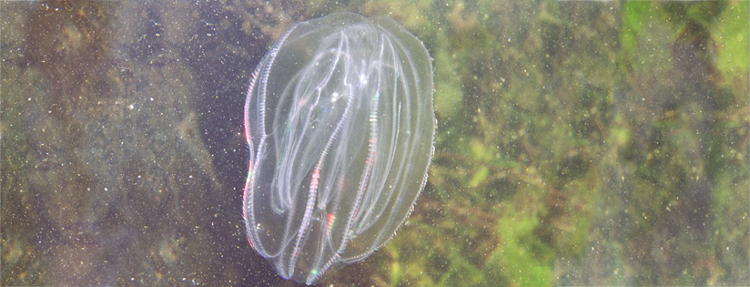




















































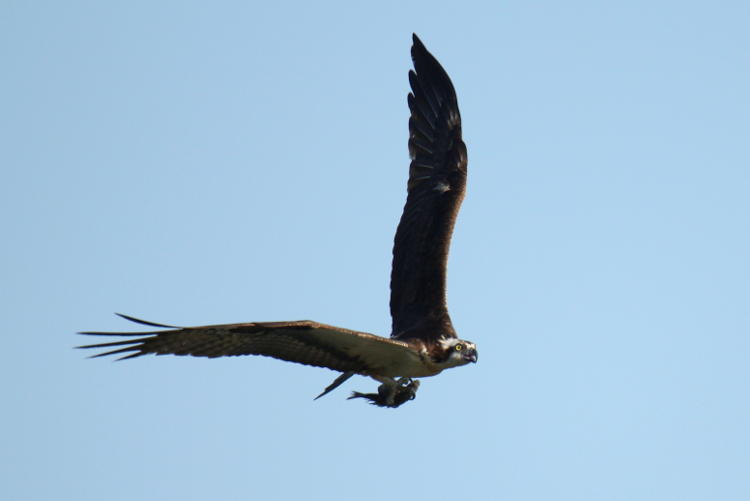
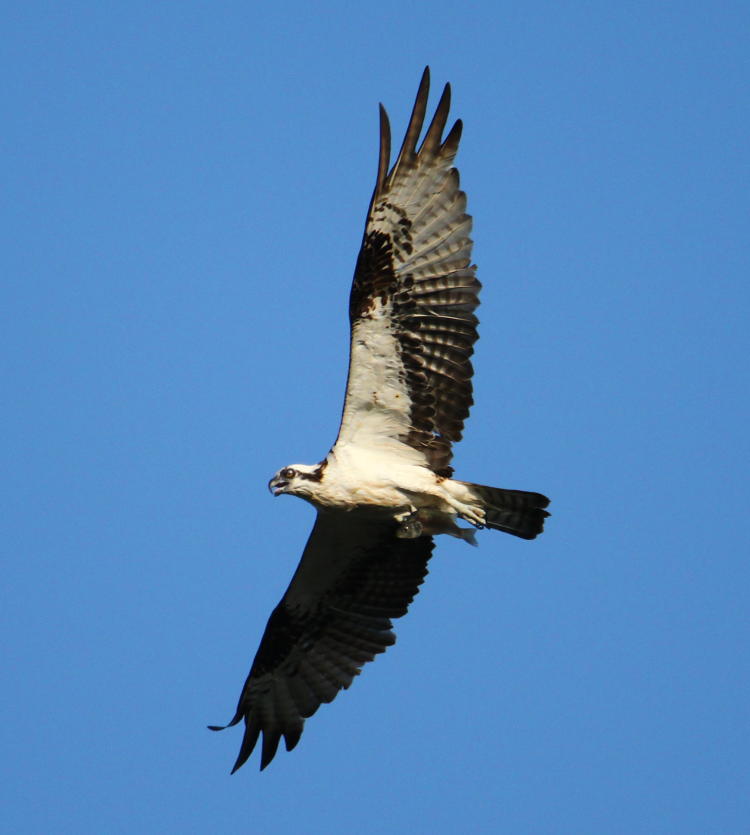

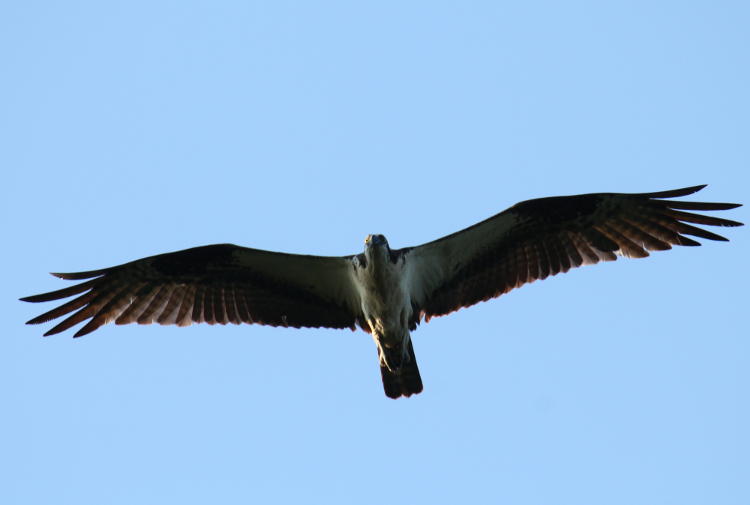
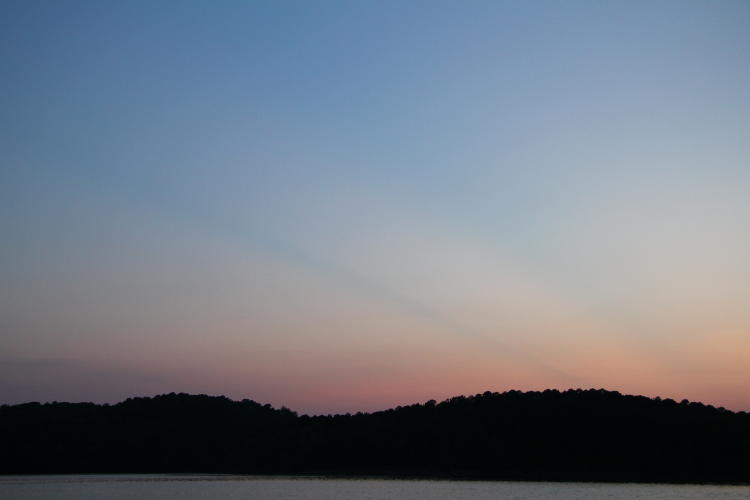

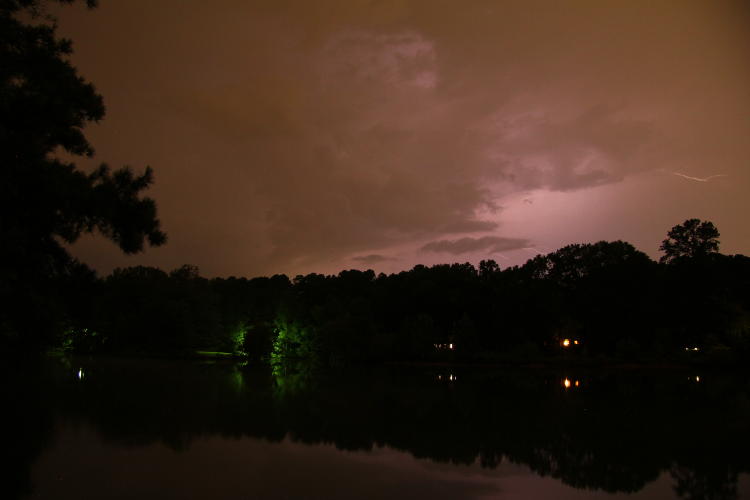
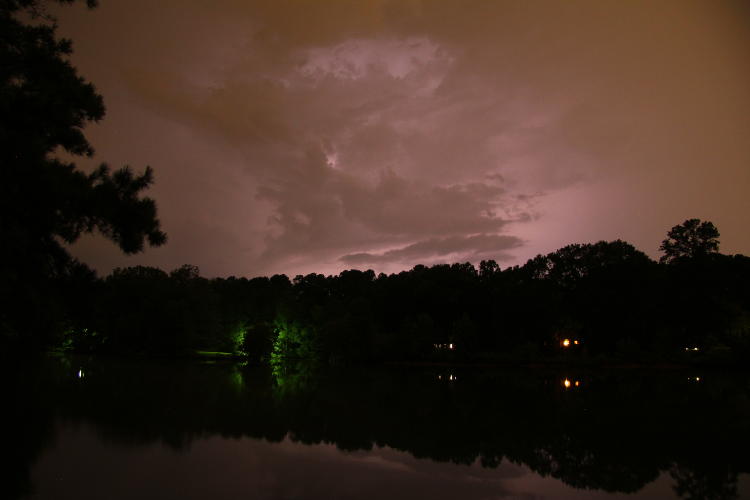
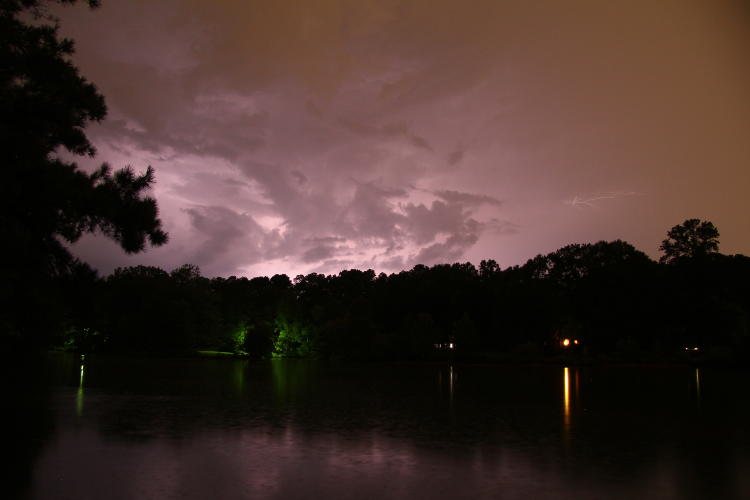
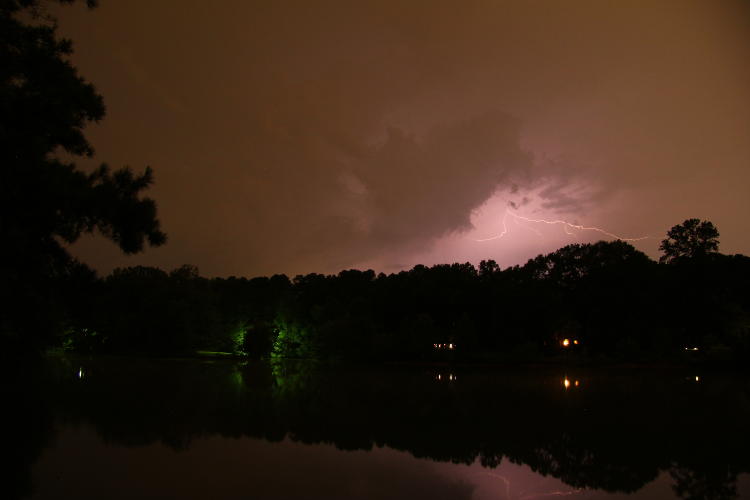



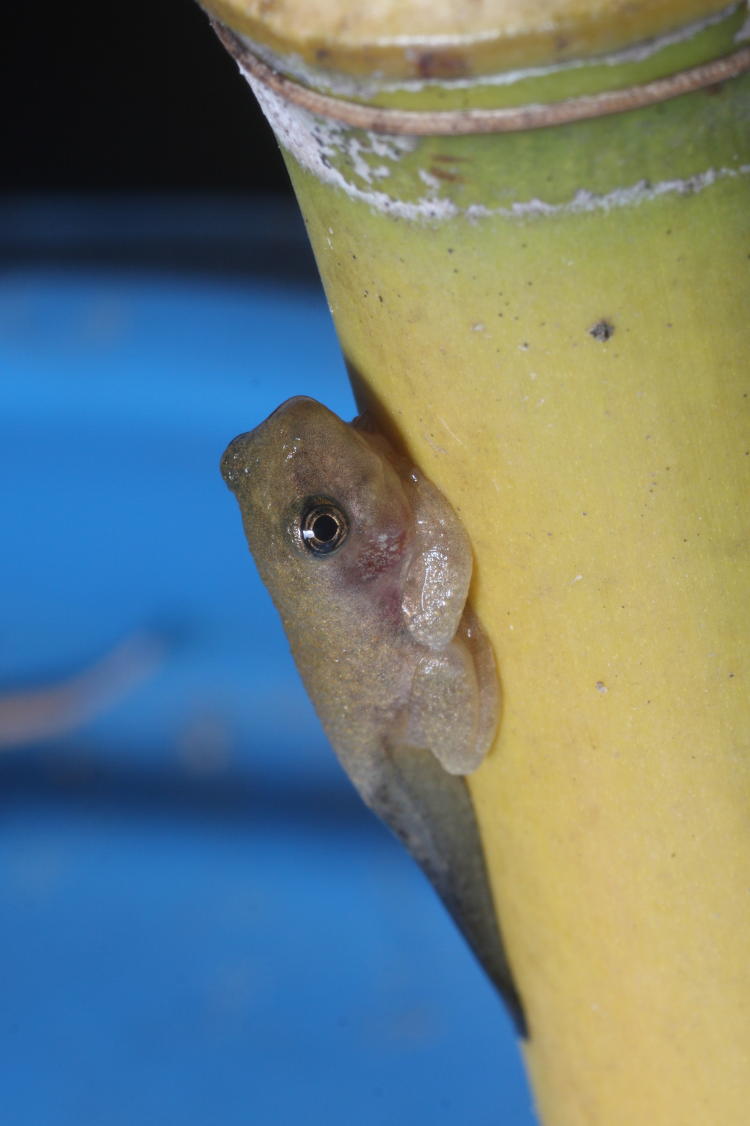
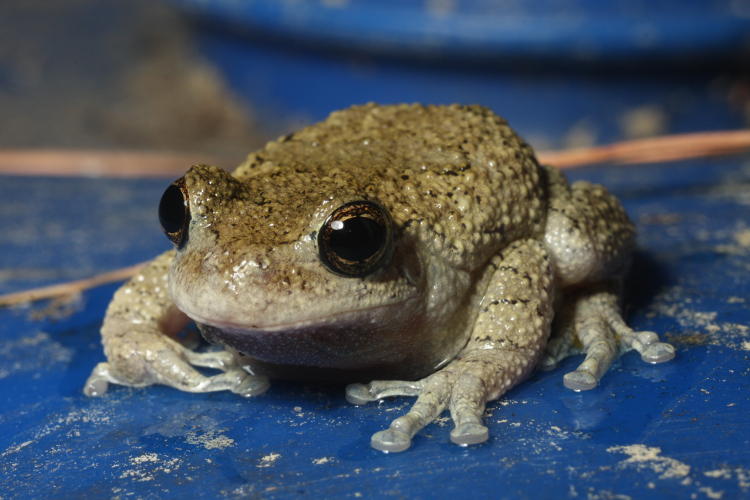

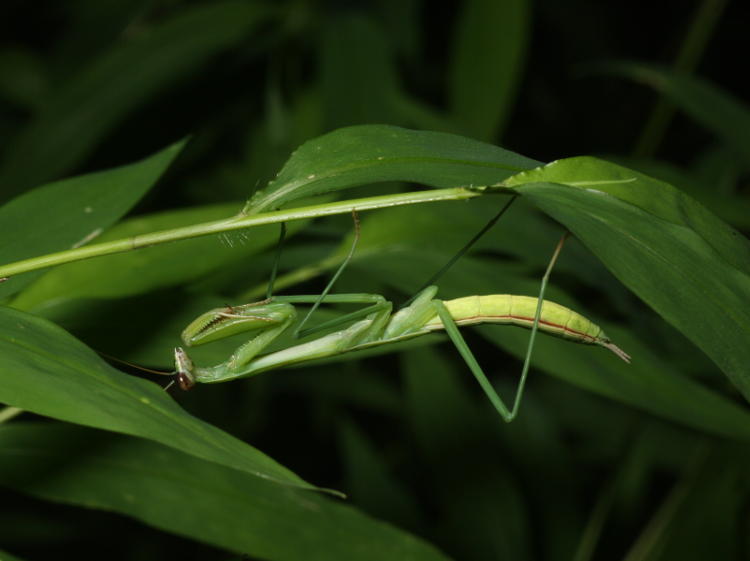
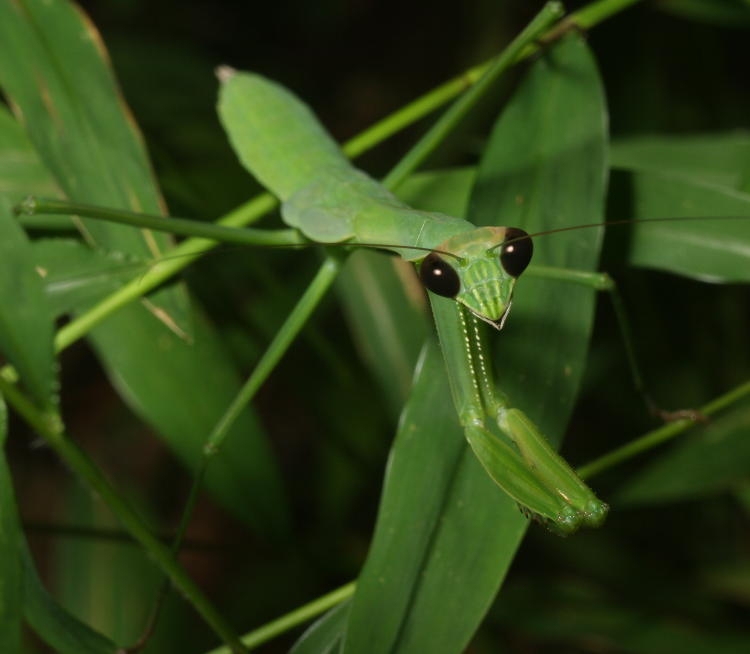

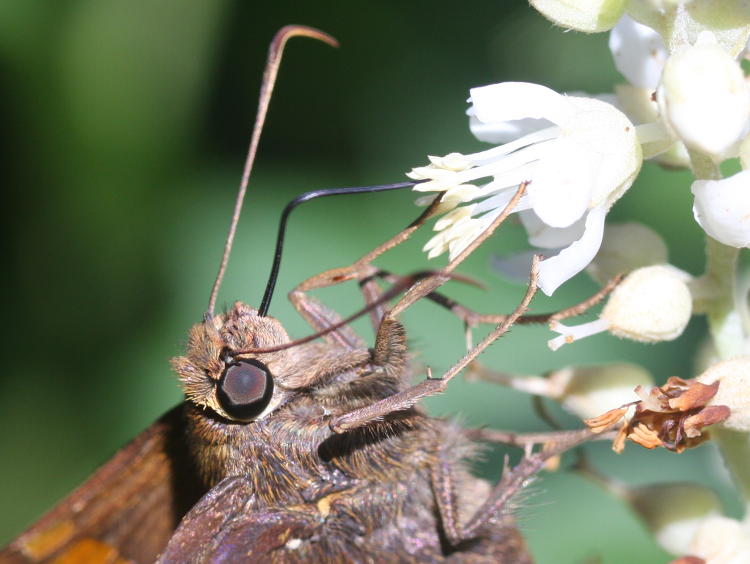
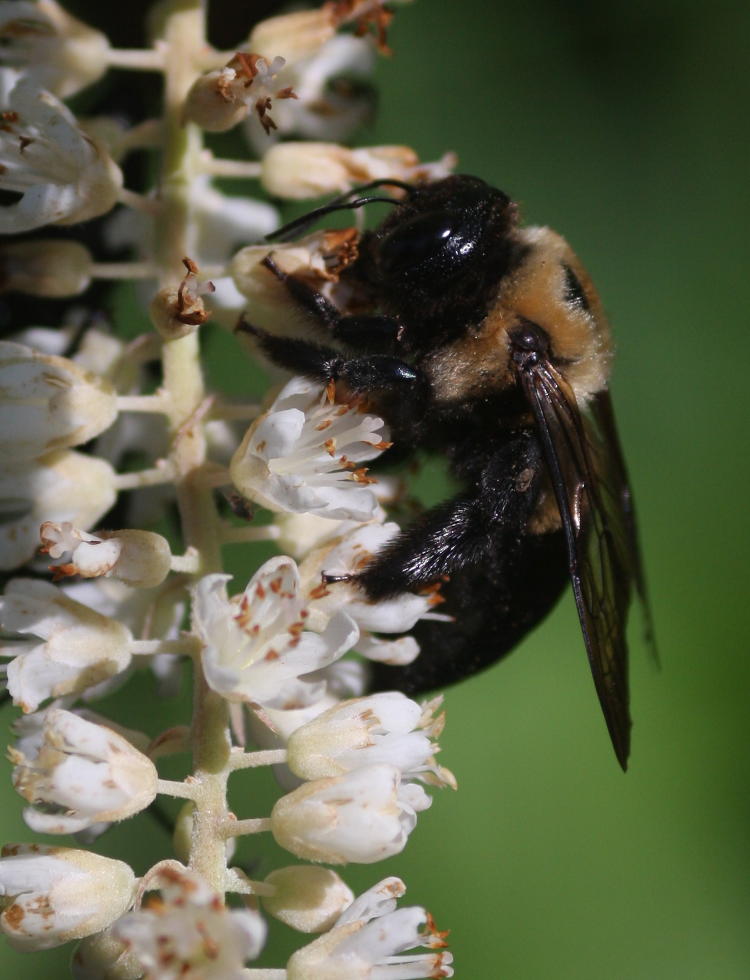

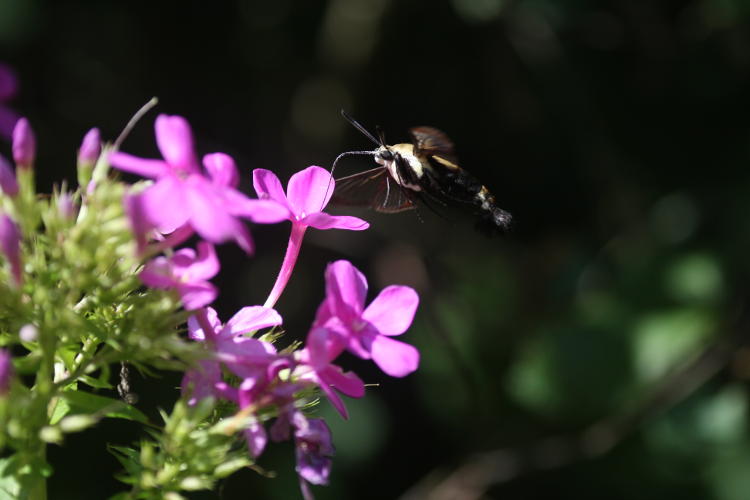
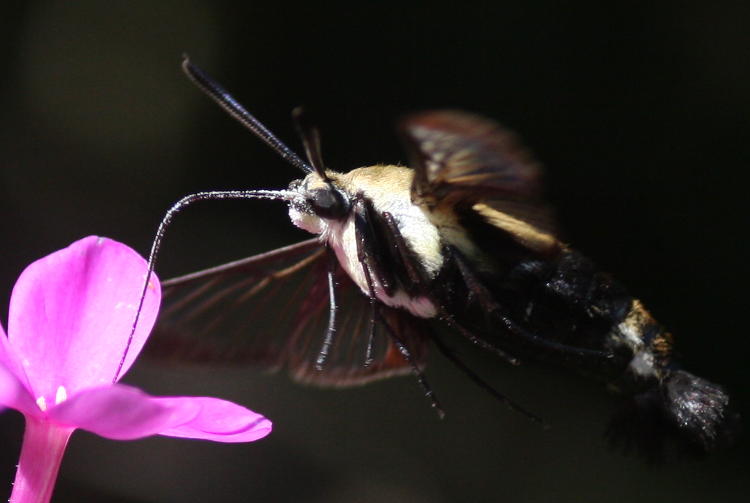


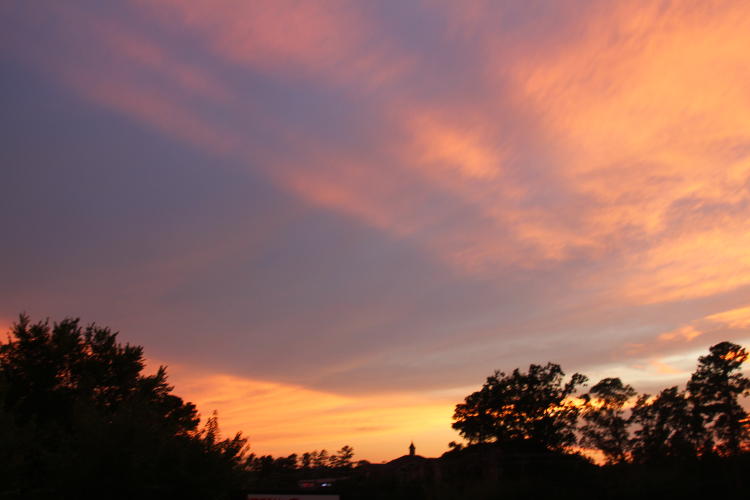
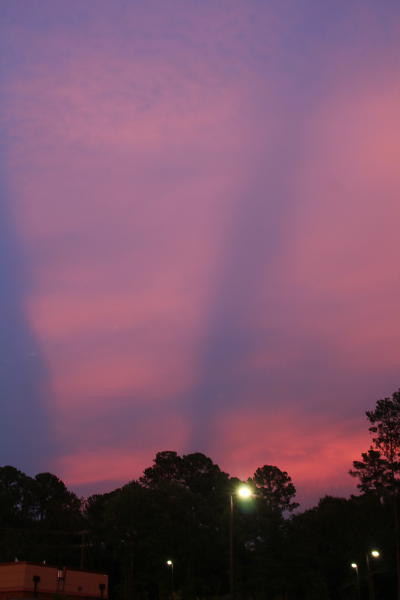 The general rule for me is, if I have the time and go out waiting for the sunset, the results are incredibly lackluster, but if the conditions are stunning, I’m doing something else. This is one example, where the sky did some great things but I was in the middle of urban blight and couldn’t work a foreground interest – at least this time I had a camera with me. Above is the view looking towards the disappearing sun, showing off some nice and dynamic crepuscular rays – well, kinda. I think that actually applies to the beams of light that make it through breaks in the clouds, and not the shadows caused by cloud peaks, but whatever; same difference. While at right, we see some anti-crepuscular rays/shadows, which are the exact same thing but in the opposite direction. Both of them appear to converge towards a common point – for crepuscular rays that would be the sun, while for anti-crepuscular rays it would be the anti-solar point, or the position directly opposite the sun. Measured by compass bearing from any given point on the surface, anyway. The point actually opposite the sun would be 180° around the Earth’s orbital disc I suppose…
The general rule for me is, if I have the time and go out waiting for the sunset, the results are incredibly lackluster, but if the conditions are stunning, I’m doing something else. This is one example, where the sky did some great things but I was in the middle of urban blight and couldn’t work a foreground interest – at least this time I had a camera with me. Above is the view looking towards the disappearing sun, showing off some nice and dynamic crepuscular rays – well, kinda. I think that actually applies to the beams of light that make it through breaks in the clouds, and not the shadows caused by cloud peaks, but whatever; same difference. While at right, we see some anti-crepuscular rays/shadows, which are the exact same thing but in the opposite direction. Both of them appear to converge towards a common point – for crepuscular rays that would be the sun, while for anti-crepuscular rays it would be the anti-solar point, or the position directly opposite the sun. Measured by compass bearing from any given point on the surface, anyway. The point actually opposite the sun would be 180° around the Earth’s orbital disc I suppose…